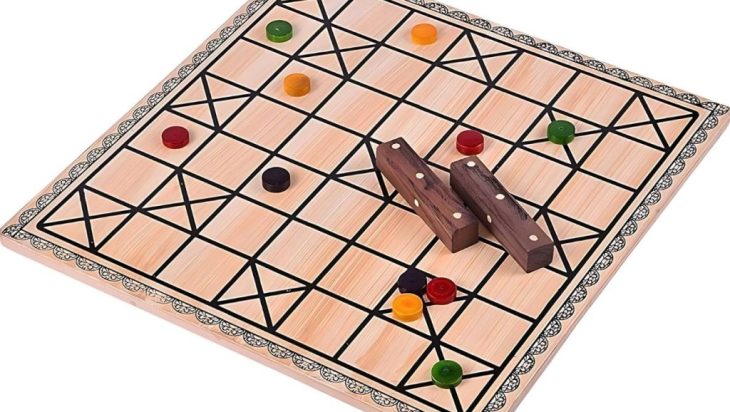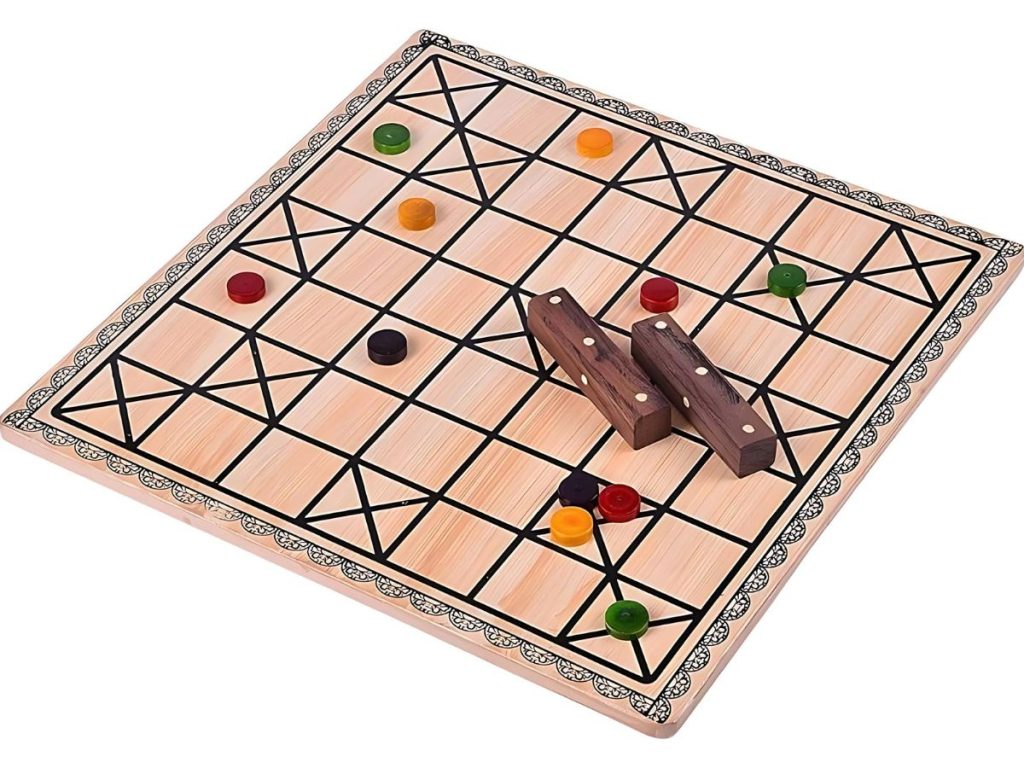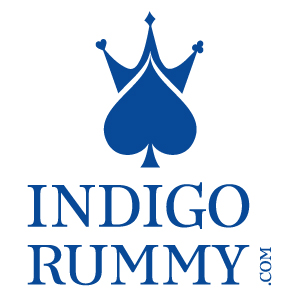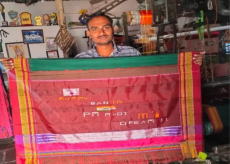Chowka Bara: An ancient Indian board game

Prepend to the content

Chowka Bara, also known as Ashta Chamma, is a traditional Indian board game that dates back to ancient times. This game is a part of India’s rich culture and history, showing how important leisure activities were to the people.
The game is played by two or four players using four cowrie shells and several tokens. The name “Chowka Bara” means “four eight,” which are the highest numbers a player can get from the cowrie shells. The game likely started in Andhra Pradesh, Telangana, or Karnataka. In Karnataka, it is called “Chowkabara,” in Andhra Pradesh and Telangana, it is known as “Ashta Chamma,” and in Tamil Nadu, it is called “Daayam.” Each region has its own small changes to the rules, adding to the game’s rich variety. This game is known by various names in different languages and regions across India. For instance, in the Mysuru region of Karnataka, it is called Chauka Bara or Gatta Bara in Kannada, while in rural Mysuru, it goes by Katte Mane or Gatta Mane, also in Kannada. Another name in Kannada within Karnataka is Chakaara. In Kerala, the game is referred to as Pakidakali in Malayalam, whereas in Andhra Pradesh and Telangana, it is known as Ashta Chamma in Telugu. In Tamil Nadu, it is called Daayam or Thaayam in Tamil. In Madhya Pradesh, the game is called Atthu (अट्ठू) in Hindi, Kanna Kauri (कन्ना कौड़ी) in Jabalpur, and Chunga (चंगा) in Hindi. In Maharashtra, it is referred to as Champool or Kach Kangri in Marathi and Challas Aath in western Maharashtra. In Gujarat, the game goes by several names including Ahmedabad Baji, Chomal Ishto, Kaangi Chaala, and Mach Kooki. In Rajasthan, it is known as Changa Po, and in Madhya Pradesh, it is called Cheeta or Chanda. Lastly, in Chhattisgarh, the game is referred to as Teri Chowk.
t’s thought to be one of the cross-and-circle games, like Pachisi, Ashte Kashte, and Chaupar. The game has been played for thousands of years. It is mentioned in the Mahabharata, one of India’s oldest and most famous stories. The character Yudhishthira played a similar game called Pachisi, which is much like Chowka Bara. This shows that board games were popular among royalty and the upper class long ago.
The Chowka Bara board always has the same number of tiles across and down, but the tiles don’t have to be square. The number of tiles varies, allowing for bigger boards and longer games. There is always an odd number of tiles so there can be a central tile. Each player uses one less token than the number of tiles on one side of the board. The goal is to get all of one’s tokens to the central tile first.
The central tile and the middle tile on each side are marked with an “X”. The marked tiles, except the central one, are where players start. Tokens move in a spiral toward the center, switching between clockwise and counterclockwise depending on the row. The number of cowrie shells facing up shows how many spaces to move. Players can double their move if they land two tokens on the same tile in one turn.
Chowka Bara is still played in some parts of Karnataka, Telangana, and Andhra Pradesh, often by drawing the board on the ground with chalk and using colored tamarind seeds as tokens.
Chowka Bara is more than just a game; it has been a way for people to come together and have fun. Traditionally, it was played during festivals and gatherings, bringing people of all ages together. The game is easy to understand but requires strategic thinking, making it enjoyable for many.
The Board and Gameplay
- The Board
Chowka Bhara is usually played on a 5×5 square board with four players, but you can increase the board size to any odd number (like 11×11) if you have more players. For a board of NxN squares (N being odd), each player gets N-1 pawns.
In the standard 5×5 version, four players each have four pawns starting at different positions on the outermost squares.
Playing the Game
- Cowrie Shells as Dice
Players use four cowrie shells as dice. When you throw the shells, you count how many land with the mouth up (value of 1) and how many land with the mouth down (value of 0). The possible values from a throw are:
– 1, 2, 3, 4 (called Chamma), and 8 (called Ashta).
If all shells land with the mouth down, it’s called Ashta and has a value of 8. If all shells land with the mouth up, it’s called Chamma and has a value of 4. Rolling a Chamma or Ashta gives you an extra turn.
Moving the Pawns
Players take turns to roll the cowrie shells and move their pawns based on the number rolled. The pawns move in an anti-clockwise direction on the outer squares and clockwise on the inner squares.
- A pawn enters the board only when you roll a Chamma or Ashta.
- Pawns can move into the inner squares only after they’ve completed a round of the outer squares and at least one opponent’s pawn is “killed” (landed on by another pawn).
If a pawn lands on a square occupied by an opponent’s pawn, the opponent’s pawn is sent back to the start, and the player gets an extra turn.
Winning the Game
The game is won when a player moves all their pawns into the central home square. Pawns can only enter the home after circling both the outer and inner squares.
Special Cases and Rules
- Rolling a Chamma or Ashta gives you a bonus turn.
- If a player rolls Chamma or Ashta three times in a row, they lose their turn.
- If most of the tokens are off the board, rolling a Chamma or Ashta can bring some tokens back.
Cowrie Shell Values:
- 3 inverted, 1 as is: Move 1 square
- 2 inverted, 2 as is: Move 2 squares
- 1 inverted, 3 as is: Move 3 squares
- 4 as is (Chamma): Move 4 squares
- 4 inverted (Ashta): Move 8 squares
In the larger board version (like 8×4=32), the rules remain the same but tokens of four distinct colors are used.
Modern Day Relevance
Even with modern board games and digital entertainment, Chowka Bara is still popular, especially in rural areas. Recently, there has been a renewed interest in traditional games. Schools and cultural groups often hold workshops and competitions to teach the game to young people.
The game is easy to set up with just a cloth or wooden board and cowrie shells, making it accessible to everyone. This simplicity has helped it survive through the years.
Chowka Bara is more than just a game; it is a part of Indian history and culture. Its long-lasting popularity shows its appeal and the important role it plays in bringing people together. As India continues to modernize, Chowka Bara remains a cherished traditional game, linking the past with the present.
The post Chowka Bara: An ancient Indian board game appeared first on G2G News.



